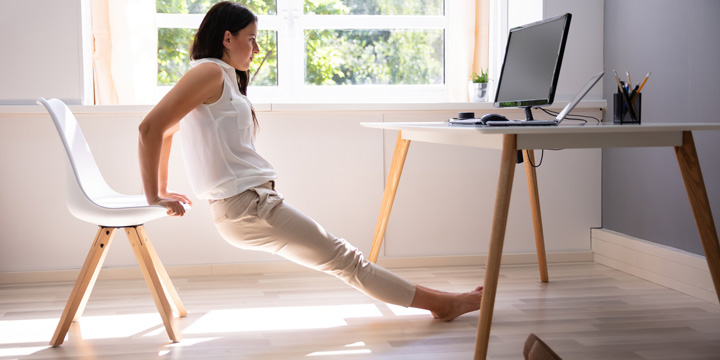
By now you’ve no doubt heard that sitting is bad for you. But wait, you exercise regularly so you needn’t worry about the harms of sedentary living, right? Well, you might want to stand up, because I have something worrisome to tell you. A growing body of research shows that people who spend many hours of the day sitting die at an earlier age than those who sit less – even if those sitters exercise.
What are the problems associated with sitting too much?
Numerous studies report that prolonged sitting is strongly associated with obesity, abnormal metabolism, diabetes, metabolic syndrome, cardiovascular disease, cancer, muscle imbalances and weakness, neurologic issues, including dementia, and an increased risk of early death. That’s quite a list. And surprisingly, these risks still exist if you exercise daily. So, even if you cycle for an hour each day, but sit at a desk for eight hours, and then sit in front of the TV or the computer for another three hours, you’re still at risk for developing these conditions.
In fact, regular exercisers may make less of an effort to move outside their designated workout time. Maybe they think they’ve worked out enough for one day. But sedentary activity causes several physiological changes in the body that can negatively affect your organs, muscles, enzymes, hormones, circulation, metabolism, bones and sleep quality. These effects can start after only 15 minutes of sitting. The good news is that normal function can be restored by getting up for just five or 10 minutes. The muscle activity needed for standing and other movement seems to trigger important processes within the body. When you sit, these processes stall — and your health risks increase. When you’re standing or actively moving, you kick the processes back into action. Click here to read a really neat summary of this principle.
The Canadian 24-hour Movement Guidelines are as follows: “limit sedentary time to 8 hours or less per day including no more than 3 hours of recreational screen time and breaking up long periods of sitting where possible”.
Here are some tips for home and work:
- Try getting up at least every 20-30 minutes.
- Spend some time every day tidying up. This will get you off the couch and free up some time to do something active on the weekend.
- Stretch or do some squats while you watch TV. If you must sit, sit on an exercise ball. When you watch TV, make an effort to take breaks and get up and move.
- Exercise your calf muscles while brushing your teeth, washing dishes or standing in line. Place your feet flat on the floor, then rise up onto the balls of your feet, hold for two seconds, then sink down. Repeat.
- If you have children, take advantage of their sports practices to be active. You are not a bad parent if you don’t watch an entire practice or game!
- Stand up while you are on the phone. Better yet, move around.
- Plan get-togethers around being active.
- Have walking meetings.
- Get up from your desk and do some stretches.
- Don’t send an email if you can walk to the recipient.
- Give up your seat on public transit. If you prefer to sit and read (or sleep), get up a stop earlier and make your way to the door.
- Set alarms or use an app to remind you to move around.
- Consider a standing work station.
- Make sleep a priority, so you are less tired and therefore have enough energy to be active.
How much activity is enough to counter the effects of sitting?
Unfortunately, there is no clear evidence on how much activity should be done to off-set sitting. Redistribution of some sitting time to moderate-vigorous physical activity has been shown to have the most beneficial effects on heart disease, body weight and diabetes. Strive to do at least 150 minutes each day of moderate-vigorous activity. But the single most important thing you can do is to incorporate more movement into your daily routine.




